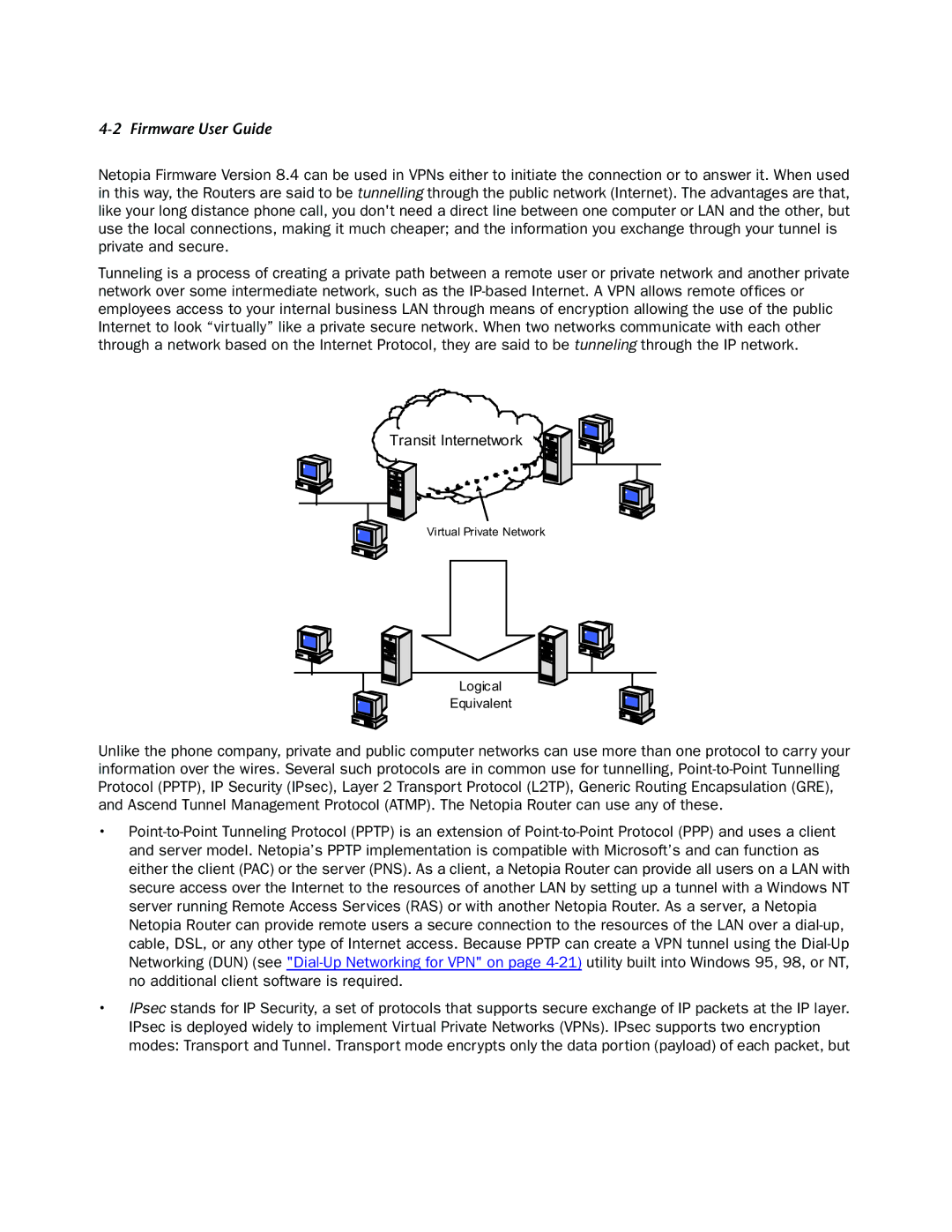4-2 Firmware User Guide
Netopia Firmware Version 8.4 can be used in VPNs either to initiate the connection or to answer it. When used in this way, the Routers are said to be tunnelling through the public network (Internet). The advantages are that, like your long distance phone call, you don't need a direct line between one computer or LAN and the other, but use the local connections, making it much cheaper; and the information you exchange through your tunnel is private and secure.
Tunneling is a process of creating a private path between a remote user or private network and another private network over some intermediate network, such as the IP-based Internet. A VPN allows remote offices or employees access to your internal business LAN through means of encryption allowing the use of the public Internet to look “virtually” like a private secure network. When two networks communicate with each other through a network based on the Internet Protocol, they are said to be tunneling through the IP network.
Virtual Private Network
Unlike the phone company, private and public computer networks can use more than one protocol to carry your information over the wires. Several such protocols are in common use for tunnelling, Point-to-Point Tunnelling Protocol (PPTP), IP Security (IPsec), Layer 2 Transport Protocol (L2TP), Generic Routing Encapsulation (GRE), and Ascend Tunnel Management Protocol (ATMP). The Netopia Router can use any of these.
•Point-to-Point Tunneling Protocol (PPTP) is an extension of Point-to-Point Protocol (PPP) and uses a client and server model. Netopia’s PPTP implementation is compatible with Microsoft’s and can function as either the client (PAC) or the server (PNS). As a client, a Netopia Router can provide all users on a LAN with secure access over the Internet to the resources of another LAN by setting up a tunnel with a Windows NT server running Remote Access Services (RAS) or with another Netopia Router. As a server, a Netopia Netopia Router can provide remote users a secure connection to the resources of the LAN over a dial-up, cable, DSL, or any other type of Internet access. Because PPTP can create a VPN tunnel using the Dial-Up Networking (DUN) (see "Dial-Up Networking for VPN" on page 4-21) utility built into Windows 95, 98, or NT, no additional client software is required.
•IPsec stands for IP Security, a set of protocols that supports secure exchange of IP packets at the IP layer. IPsec is deployed widely to implement Virtual Private Networks (VPNs). IPsec supports two encryption modes: Transport and Tunnel. Transport mode encrypts only the data portion (payload) of each packet, but

